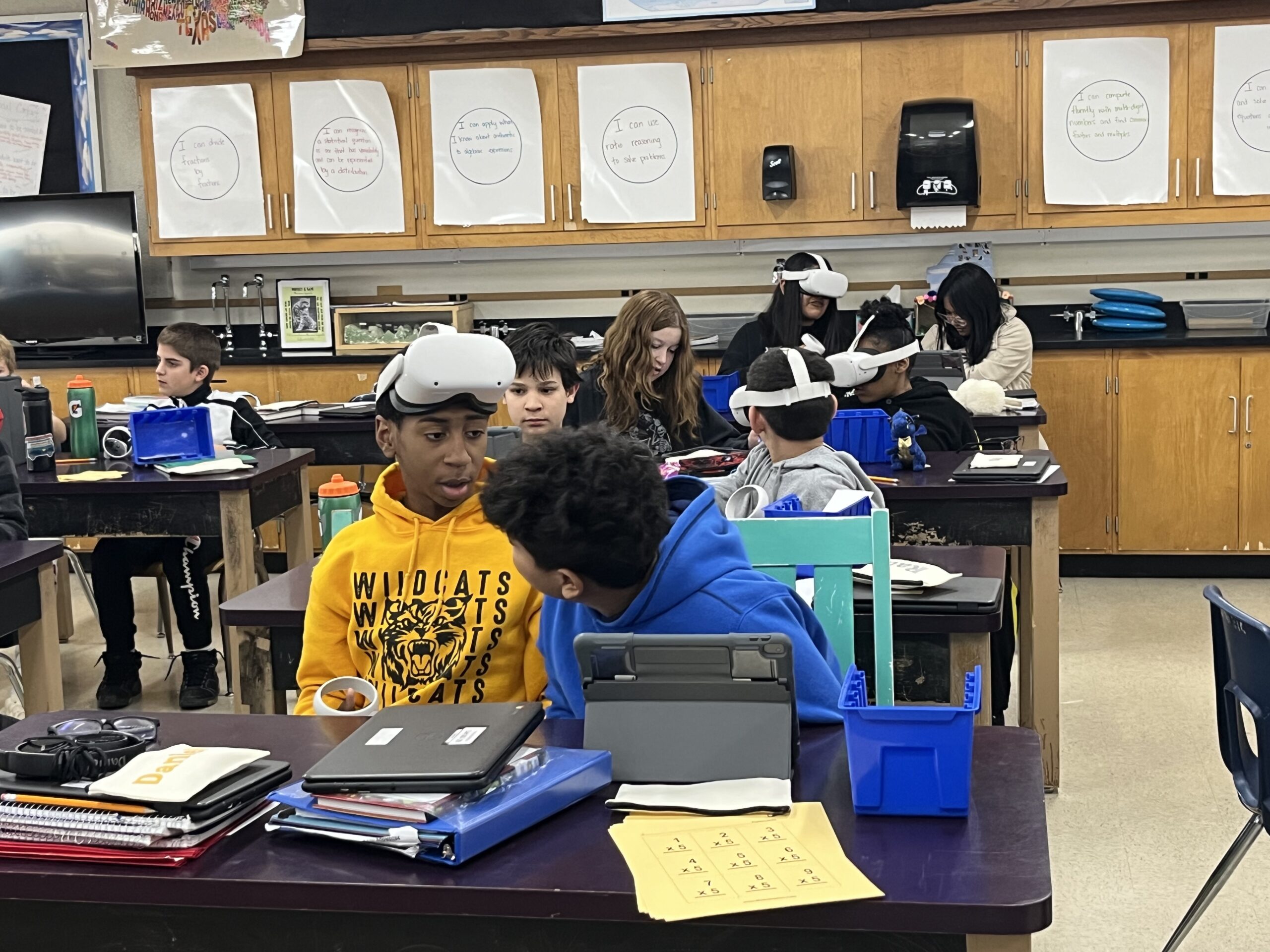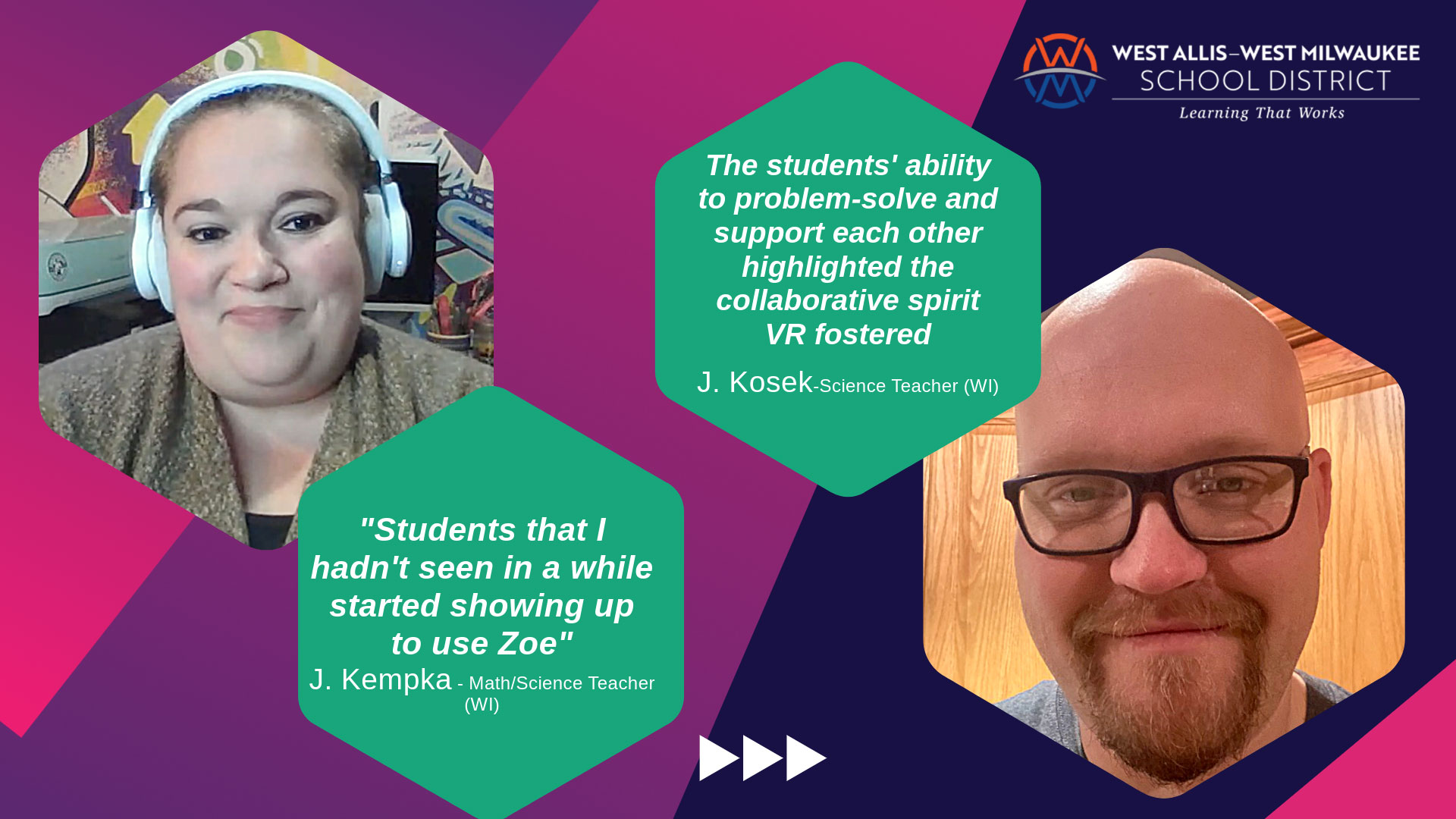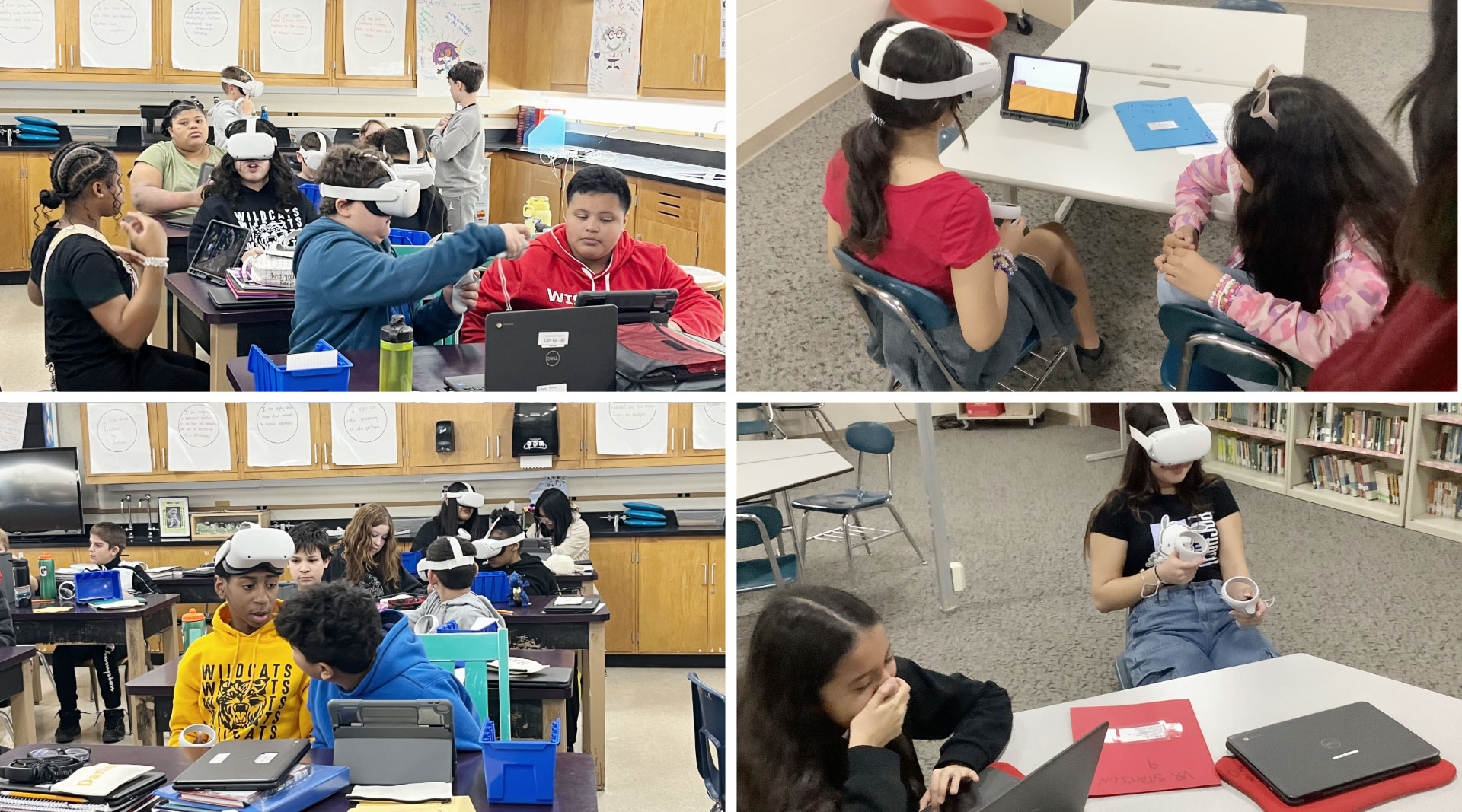
Background
In West Allis-West Milwaukee School District, educators Jennifer Kempka and Justin Kosek led VR technology initiatives to enrich learning. Kempka, teaching 6th-grade math and science, integrated VR to create immersive learning experiences, while Kosek, the Dean of Students, supported district-wide VR adoption. Both secured funding through grants, participated in online training, and actively supported other educators in their use of VR in the classroom.

Teachers Jen Kempka and Justin Kosek from West Allis-West Milwaukee School District
The Challenge
Kempka recognized the need to go beyond traditional projects to engage her students more effectively. With a desire to build upon a previously successful project, she wanted to use VR headsets as a further extension of hands-on application. By doing so, Kempka hoped to engage her students and deepen their understanding of complex subjects.
Interview with Kempka
Kosek's goal was to transform the traditionally dry subject matter of the water cycle into an engaging and interactive experience. He understood that many students saw the topic superficially and typically learned through rote memorization or simple presentations. Kosek wanted to move away from regurgitated facts and instead use VR technology to bring the water cycle to life to encourage genuine interest and a depth, not breadth, understanding for his students.
The Program
In Kempka's classroom, students used VR to expand their two-dimensional fantasy islands into immersive three-dimensional worlds. Students integrated creative writing, geography, and math to develop comprehensive lore, governance, and landscapes.
Kosek used VR to change the way students understand the water cycle. Instead of traditional methods, he had students design a video game in VR, where they could apply scientific principles creatively. This project taught them about environmental science and involved them in interactive storytelling and game design.
The Results
Kosek was surprised by the immediate impact VR had on his classroom dynamics. Within two days, students were deeply engaged. They paired up, with one student handling the headset and the other guiding through the iPad. This collaboration turned the classroom into a workshop of ideas and creativity. As an educator, Kosek found himself transitioning from a traditional teaching role to more of a facilitator. He oversaw students as they navigated through their projects with remarkable autonomy.
The students' creativity exceeded all expectations. They embraced the water cycle concept and infused their personal interests into the projects. The video games were both educational and reflective of their personalities. One standout project involved a quest to restore the water cycle disrupted by a dragon's fire, showcasing an inventive approach to understanding and applying scientific concepts.
What surprised Kosek the most was the ease with which students adapted to the technology—something he had found challenging. "I had students starting to create and build and make interactions and it seemed oddly intuitive for them where it was not necessarily so intuitive for me." The students' ability to problem-solve and support each other highlighted the collaborative spirit VR fostered. This approach made learning more interactive and allowed students to explore solutions creatively beyond how Kosek previously taught the subject matter.
Kempka observed a similar effect with VR headsets. Her students demonstrated unparalleled creativity and dedication to the project. Students created custom assets and complex interactions to bring their fantasy islands to life in ways she had not anticipated. One notable project involved a detailed emergency response simulation, complete with voiceovers and a dynamic scene not found in the Zoe assets—a testament to the students' imaginative capabilities.
The project's success was evident in the quality of work and student engagement levels. They were more punctual, focused, and participatory, a significant shift attributed to the immersive and interactive nature of the VR experience. For Kempka, the most rewarding aspect was witnessing the tangible impact of VR on learning—making abstract concepts accessible and engaging for visual learners and fostering a profound, memorable understanding of the curriculum.
Both educators observed how VR improved student engagement, creativity, and problem-solving. It supported a level of learning unmatched by traditional teaching and assessment methods. Students demonstrated their learning in topics historically surface-level, like the water cycle. They took it to an interactive, collaborative, and engaging level, accentuating the potential of VR as a transformative tool in education.
What they Learned

Jen and Justin's VR Class
Kosek's experience using VR technology in his classroom provided invaluable insights, particularly on student engagement and the role of educator flexibility. His advice to educators considering VR tools: "Try to give up the control. Be comfortable in the uncomfortable. The end result was so worth the struggle in the process. And truthfully it wasn't that big of a struggle." His perspective proves that when students have the freedom to explore and create, they’ll far exceed teacher expectations.
The transition to open-ended creativity may be challenging for educators, but it leads to richer, more impactful learning experiences. Kosek observed firsthand how students quickly adapt to and thrive with VR technology. Educators' expectations may only partially anticipate the capability and enthusiasm of their students.
Kempka's experience with VR in the classroom led to a profound realization of the nature of learning and engagement, sharing, "Visualizing what can really happen and what really works helps students to see something and make it tangible. It's no longer on paper, a Chromebook, or an iPad. By using Zoe and wearing a headset, students can manipulate their learning with their hands, making it an unforgettable experience." Immersive VR technology provides a hands-on, interactive approach that deeply resonates with students. Because of this, she saw students returning to class. “It was really, really rewarding. Especially seeing some of the students that I haven't seen for a while. They started showing up to class." Kempka encourages other educators to embrace VR. Her enthusiasm is backed by positive feedback, heightened motivation, and knowledge retention.

Interested in using VR in your classroom? Zoe Immersive provides initial and ongoing comprehensive VR support to administrators and teachers, so students can start creating and learning with VR right away. Contact Zoe Immersive today.
